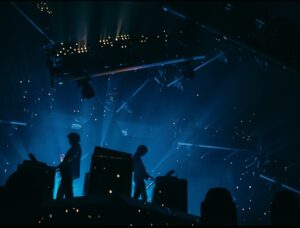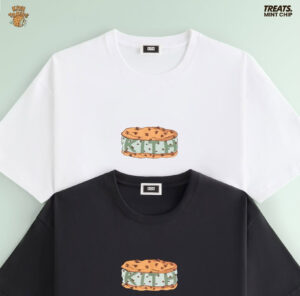

In a historic first, the Musée du Louvre in Paris has unveiled its first-ever fashion exhibition, a groundbreaking showcase titled Louvre Couture: Art and Fashion. Running from January 24 to July 21, 2025, this exhibition is a bold new step for the world’s most famous museum, blending the realms of art and haute couture in a way that has never been done before within the museum’s hallowed halls.
This unprecedented exhibition features approximately 100 garments and accessories from 45 globally renowned designers, including Versace, Dior, Chanel, Balenciaga, Givenchy, Schiaparelli, and Alexander McQueen. These pieces are carefully curated and displayed alongside the museum’s historic collections, creating an immersive dialogue between fashion and art history.
For centuries, the Louvre has been synonymous with fine art, housing masterpieces like the Mona Lisa and the Venus de Milo. Now, for the first time, it is recognizing fashion as an art form in its own right, celebrating the deep, intricate relationship between historic artworks and modern haute couture.
Curated by Olivier Gabet, the Louvre’s Director of Decorative Arts, this exhibition aims to highlight how designers throughout history have been inspired by art, architecture, and historical narratives. According to Gabet:
“These designers had an incredibly sophisticated culture that was a big part of their creativity. Many, like Christian Dior and Yves Saint Laurent, were regular visitors to the Louvre. The history of art provides one of the biggest sources of inspiration for the world’s greatest designers.”
But how exactly does Louvre Couture: Art and Fashion tell this story? The exhibition is structured into four key thematic sections, each highlighting a different historical period and its influence on modern fashion.
A Journey Through Time: The Four Themes of the Exhibition
The Byzantine and Medieval Eras
The first section of the exhibition delves into the Byzantine and Medieval periods, known for their opulence, intricate tapestries, and religious iconography. Designers have often drawn inspiration from these eras, reinterpreting mosaics, illuminated manuscripts, and ecclesiastical garments into contemporary couture.
A Dolce & Gabbana crystal-embroidered gown, inspired by 11th-century mosaics from the Basilica di Santa Maria Assunta in Venice, is one of the standout pieces in this section. The golden embroidery and jewel-toned detailing echo the rich craftsmanship of medieval religious art.
Additionally, Gianni Versace’s iconic 1997 metal mesh gown, adorned with Swarovski crystals and Byzantine crosses, exemplifies his fascination with ancient Greek and Byzantine influences. This particular gown, which took over 600 hours to hand-stitch, reflects the enduring power of historical art in modern luxury fashion.
The Renaissance Influence
The Renaissance, a period known for the revival of classical art and intellectual exploration, is another major influence on fashion. This section of the exhibition highlights how the symmetry, elegance, and grandeur of Renaissance artworks have inspired modern designers.
One of the exhibition’s most striking pairings is a silk Dior gown featuring a Sun King motif, placed directly before a Baroque portrait of Louis XIV. This juxtaposition visually reinforces how the ornate styles of the 17th century continue to shape couture today.
Additionally, Alexander McQueen’s Fall 2013 collection, which drew heavily from Renaissance armor and Elizabethan ruffs, is also prominently featured. McQueen, known for his dramatic historical influences, often took direct inspiration from Titian, Holbein, and Leonardo da Vinci’s portraits, reinterpreting them through sculptural silhouettes and avant-garde tailoring.
The 17th and 18th Centuries: Baroque and Rococo Extravagance
The Baroque and Rococo periods were all about excess, luxury, and intricate embellishments. Think voluminous gowns, extravagant embroidery, and soft pastel palettes that reflected the aristocracy’s obsession with grandeur.
This section showcases designs from Chanel and Balenciaga, who have often channeled Marie Antoinette’s era of opulence into their haute couture collections. Balenciaga’s 2023 Autumn/Winter gown, crafted from 3D-printed lace inspired by the lavish gowns of the 18th century, is a prime example of how historical opulence is translated into modern fashion.
Notably, Christian Dior’s 1955 “Palace” dress, featuring hand-stitched gold embroidery and exaggerated panniers, is displayed next to an original portrait of Madame de Pompadour, Louis XV’s famous mistress and fashion icon. This placement highlights the eternal cycle of inspiration between past and present in couture.
The 19th Century and the Second Empire: The Birth of Modern Elegance
The final section of the exhibition focuses on the 19th century and France’s Second Empire, an era when fashion became increasingly structured, refined, and accessible to the elite. This period saw the rise of haute couture as an industry, thanks to visionaries like Charles Frederick Worth, the world’s first official couturier.
A highlight of this section is a Givenchy ballgown from the 1950s, reminiscent of Empress Eugénie’s extravagant evening dresses. This gown, with its layers of tulle and delicately hand-sewn embellishments, demonstrates how the elegance of the Second Empire has remained relevant in contemporary couture.
Additionally, Yves Saint Laurent’s 1981 collection, directly inspired by Édouard Manet’s painting “Olympia”, is a standout. The exhibition places his designs next to Manet’s scandalous masterpiece, drawing a direct visual link between 19th-century art and modern fashion’s bold reimaginings.
Blurring the Lines Between Art and Fashion
One of the exhibition’s most innovative features is its juxtaposition of haute couture with classical art. Rather than treating fashion as a separate discipline, Louvre Couture seamlessly integrates garments into the museum’s historic galleries, allowing visitors to experience fashion as part of a larger artistic narrative.
For example, a Balenciaga armor-inspired gown is displayed among Renaissance suits of armor, highlighting the way historical craftsmanship continues to inform contemporary silhouettes.
Similarly, a Schiaparelli couture dress, inspired by Hieronymus Bosch’s surreal paintings, is placed alongside 16th-century Flemish masterpieces, inviting viewers to explore the parallels between dreamlike couture and fantastical medieval art.
According to Laurence des Cars, the Louvre’s president:
“It’s very important for the Louvre to continue to open itself up to new generations and to make its own small contribution to understanding today’s world. That is exactly what this exhibition does.”
A Self-Funded Artistic Endeavor
Unlike many high-profile fashion exhibitions, Louvre Couture is notably not sponsored by luxury brands, allowing the museum to maintain full curatorial independence.
To fund this ambitious project, the Louvre has organized a special fundraising gala during Paris Fashion Week in March 2025, surpassing its €1 million fundraising goal.
This decision ensures that the exhibition remains purely about art and history, rather than commercial branding, making it a true celebration of fashion as an artistic discipline.
Final Thoughts: A Landmark Exhibition in Fashion and Art History
By merging historical masterpieces with contemporary haute couture, Louvre Couture: Art and Fashion represents a bold new chapter for the Louvre and for fashion as a recognized art form.
This exhibition doesn’t just display fashion—it elevates it, positioning it within the same artistic lineage as Renaissance paintings, Baroque sculptures, and classical architecture.
For anyone passionate about fashion, history, and art, this exhibition is a once-in-a-lifetime experience. It reminds us that fashion has always been, and will always be, an art form woven through time.
Louvre Couture: Art and Fashion runs until July 21, 2025, with tickets available via the Louvre’s official website. Don’t miss this historic moment where the past and present meet in the most stylish way possible.
No comments yet.









